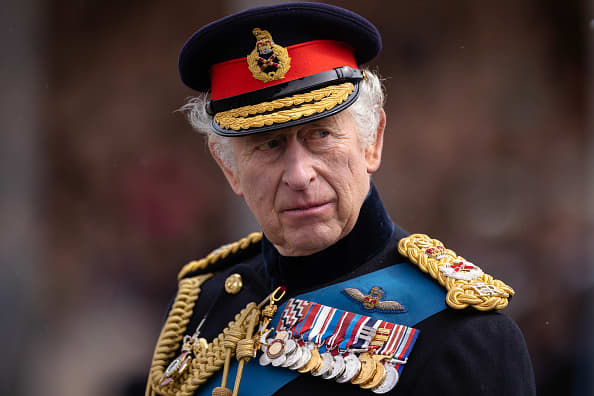
Denmark’s Queen Margrethe II announced Sunday that she plans to abdicate after 52 years and hand over the throne to her son, Crown Prince Frederik.
The queen, who is Europe's longest-reigning living monarch, announced during her New Year's speech that she would step down on Jan. 14th, which is the anniversary of her own accession to the throne at age 31 following the death of her father, King Frederik IX.
Margrethe, 83, said the back surgery she underwent in early 2023 led to “thoughts about the future” and when to pass on the responsibilities of the crown to her son. “I have decided that now is the right time,” she said in her speech.
Danish Prime Minister Mette Frederiksen paid tribute to her in a statement, offering a “heartfelt thank you to Her Majesty the Queen for her lifelong dedication and tireless efforts for the Kingdom.”
Get top local stories in Philly delivered to you every morning. >Sign up for NBC Philadelphia's News Headlines newsletter.
Margrethe is the “epitome of Denmark” Frederiksen’s statement read, and “throughout the years has put words and feelings into who we are as a people and as a nation.”
The 6-foot-tall, chain-smoking Margrethe has been one of the most popular public figures in Denmark, where the monarch's role is largely ceremonial. She often walked the streets of Copenhagen virtually unescorted and won the admiration of Danes for her warm manners and for her talents as a linguist and designer.
A keen skier, she was a member of a Danish women’s air force unit as a princess, taking part in judo courses and endurance tests in the snow. Margrethe remained tough even as she grew older. In 2011, at age 70, she visited Danish troops in southern Afghanistan wearing a military jumpsuit.
US & World
As monarch, she crisscrossed the country and regularly visited Greenland and the Faeroe Islands, the two semi-independent territories which are part of the Danish Realm, and was met everywhere by cheering crowds.
Denmark has Europe’s oldest ruling monarchy, which traces its line back to the Viking king Gorm the Old, who died in 958. Although Magrethe is head of state, the Danish Constitution strictly ruled out her involvement in party politics.
Yet the queen was clearly well-versed in law and knew the contents of the legislation she was called upon to sign.
She received training in French and English from her earliest years, as well as Swedish from her mother. In addition to archaeology, she studied philosophy, political science and economics at universities in Copenhagen, Aarhus and Cambridge along with the London School of Economics and the Sorbonne in Paris.
Ever since his birth on May 26, 1968, Frederik André Henrik Christian has been the heir to the Danish throne.
He is the oldest son of Queen Margrethe and her late French-born husband, Prince Henrik, who died February 2018. Frederik, 55, has a younger brother, Prince Joachim.
Since the age of 18, he has served as regent whenever his mother was outside the kingdom and carried out official duties, shaking hands with thousands and receiving foreign dignitaries.
The queen’s announcement made up only a few sentences at the end of her wide-ranging New Year’s speech which reflected on the “turbulence and upheaval in the world” amid the wars in the Middle East and Ukraine, and the climate crisis.
But she also thanked her nation's people for “the warmth and hospitality I meet with everywhere in Denmark.”
While lavishing accolades on the queen, the prime minister also looked to the future.
“In the new year, Crown Prince Frederik will be proclaimed king. Crown Princess Mary will become queen. The kingdom will have a new regent and a new royal couple," he said in his statement. "We can look forward to all of this in the knowledge that they are ready for the responsibility and the task.”



